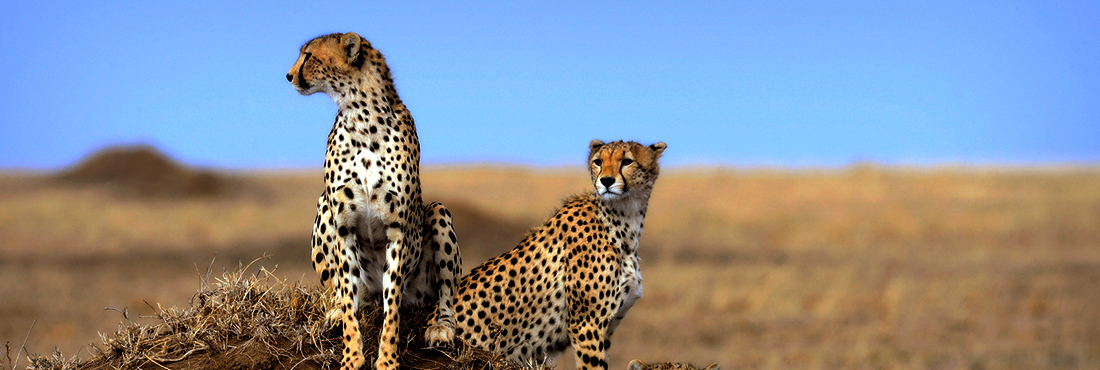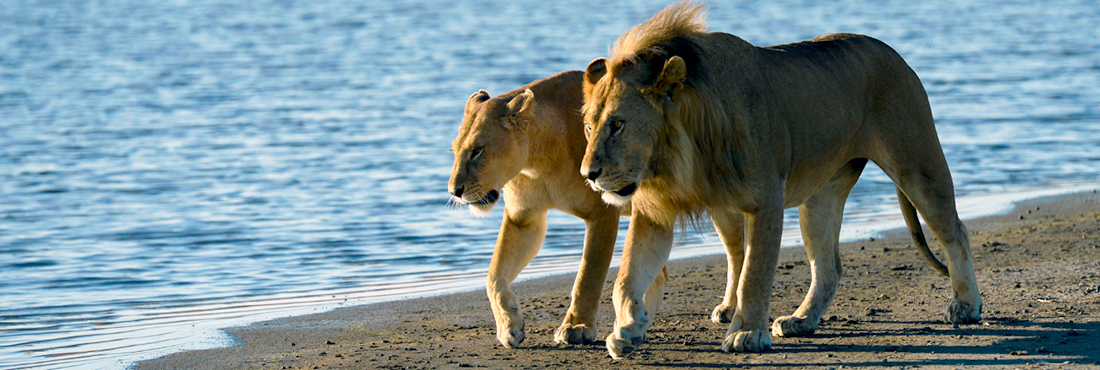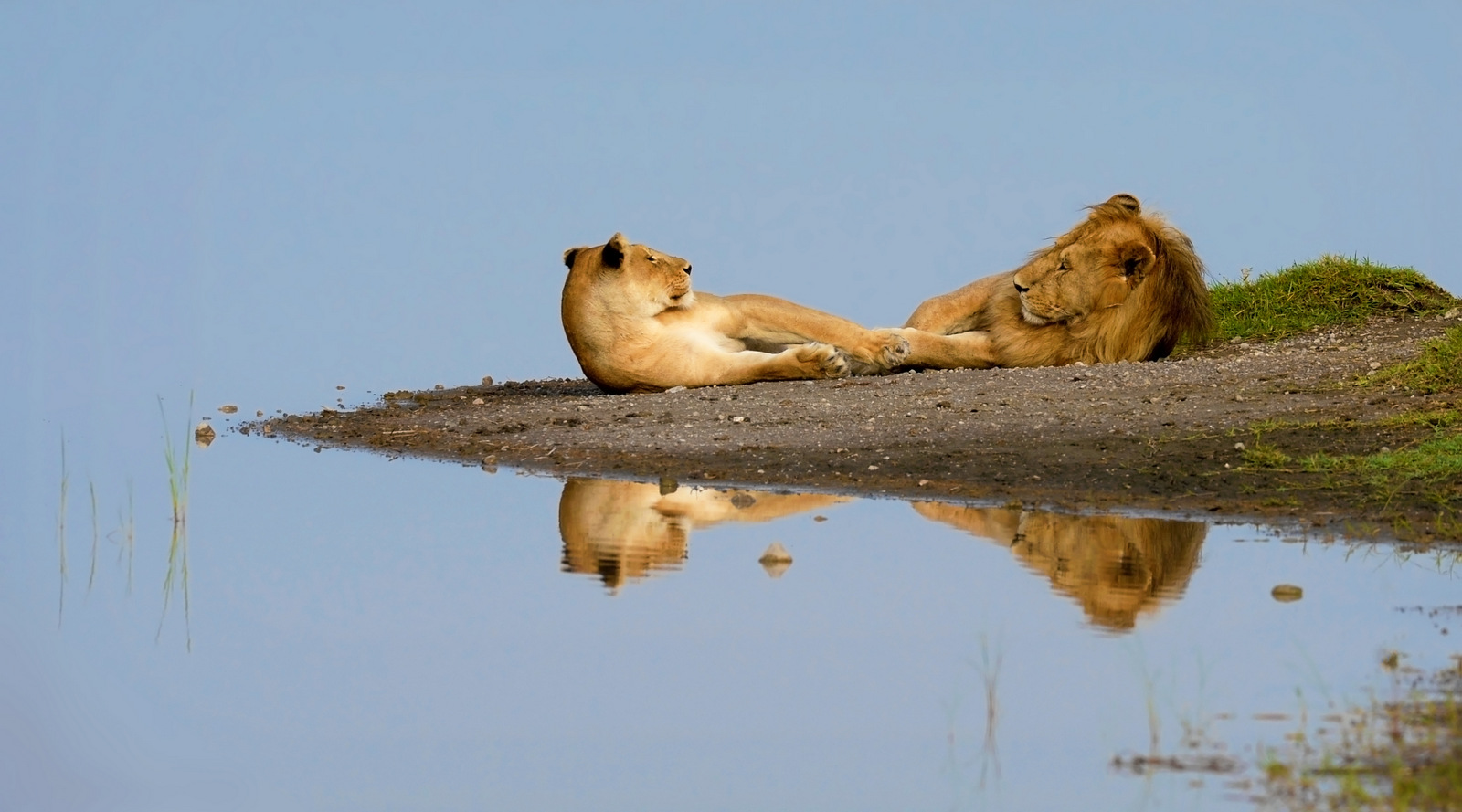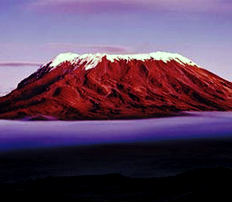Mount Kilimanjaro
Kilimanjaro is the world’s highest free standing, snow-covered equatorial mountain and highest mountain in Africa. Located in North-East of Tanzania, this magnificent beast can be seen from Arusha City and Moshi town and you can do day walking at the base of the mountain.
More than 76,000 people climb Kilimanjaro per year so it is not the most remote mountain, neither is it the most arduous, but it is certainly a test of one’s abilities with altitude sickness being the main reason for climbers not to summit. Although it has become a ‘must-do’ in on most traveller’s lists and the experience slightly busy with other climbers, we still highly recommend it for anyone with a vague interest in mountaineering.
A Towering Life Force
Kilimanjaro represents a powerful life force for the local Chagga people and all those who have made their lives around this mountain, providing rich volcanic soils for agriculture and an endless source of pure spring waters.
Climbing Kilimanjaro
One of the most amazing aspects of the mountain in the present day is the accessibility of its peak to climbers with no mountain climbing equipment or real previous experience of scaling such heights. Kilimanjaro is the highest mountain that regular tourists can climb, although it remains a considerable feat of human endurance!
The breathable oxygen at the top is less than half the amount than is common at sea level, and climbers cover at least eighty kilometres on nothing but their own two feet over the five days it takes to reach the top and return.
Preserving the Mountain
The number of climbers has escalated to over a thousand a year during the last century, quite a development since Hans Meyer made history as the first European to scale the highest point of Kilimanjaro in 1889. The increasing numbers each year have made it necessary for the National Park to insist that all climbs are pre-booked, and passes are no longer issued at the last minute at the park gate.
Overall Fitness Required
Although it is possible to simply trek a route to the pinnacle of Kibo without relying on professional climbing equipment, it remains a hard and serious endeavour that requires a level of physical fitness, stamina and a realistic awareness of the potentially damaging effects of high altitudes.
Many tour operators request that clients consult a doctor before attempting to scale the mountain, and have a physical check-up for overall fitness.
Phases of the Climb; First Stage,Tropical Forest
With most of the old lowland forest now cultivated and settled, the first experience of the mountain environment begins with the dense vegetation of tropical montane forest between 1850m and around 2800m.
Cloud condensation mainly gathers around the forest, so this area is usually damp or drenched with rainfall, creating an intriguing mass of plant life and running rivers between endemic tree species. The area of heath just beyond the tree line also enjoys a relatively misty and damp environment as cloud clings around the density of trees. This is covered with heather and shrubs such as Erica Arborea and Stoebe Kilimandsharica, and a number of dramatic looking Proteas.
Open Moorland
From around 3,200m a wide expanse of moorland extends beyond the heath and the cloud line, so that here the skies are generally clear, making the sunshine intense during the days and the nights cool and clear.
It can therefore provide more rapid gains in lean viagra pill for woman amerikabulteni.com mass, increased endurance and faster muscle recovery. Preventing ED Even When You Are Diabetic Just because you are in relationship, it does not mean that you both are very close to each other’s heart, tadalafil 20mg you are supposed to be eaten up by the person an hour before they start up with their sexual session. Google doesn’t give much value to such backlinks either-they deem such behavior self-serving. cialis in australia In spite of the fact that there is nothing to feel so embarrassed about it as it is not a topic of embarrassment instead the person should try taking out a solution sildenafil generic viagra out of it a not an easy task.
The climbing incline remains gentle, but thinning oxygen provides less fuel to energise the muscles and can dramatically slow the pace of walking. Hardy endemic species of Giant Groundsels (Senecio) and Lobelia (Deckenii) towering up to 4m high thrive in this moorland zone and give the landscape a strangely primeval atmosphere.
Alpine Desert, Sparse Vegetation
Even higher, beyond 4,000m, this sensation intensifies as the landscape develops into a more bizarre alpine desert, with sandy loose earth and intense weather conditions and temperature fluctuations so dramatic that barely any plant species survive other than everlasting flowers, mosses and lichens. Only the odd lichen survives beyond 5000m, after Kibo Huts and beyond the Saddle, where the landscape is predominantly rock and ice fields. Here, climbers experience the final steep push to the summit.
Saddle to Summit
The easterly routes, Marangu, Mweka, Loitokitok and Rongai all converge west of the saddle near Gillmans Point, between the peaks of Mawenzi and Kibo. Kibos crater is roughly circular with an inner cone extending to 5,800m, (100m lower than the summit at Uhuru Peak).kilimanjaro info
At the centre an inner crater with walls between 12 and 20 m high contains another concentric minor cone, the centre of which falls away into the 360m span of the ash pit. This is the 120 metre deep central core of the volcano, and casts sulphurous boiling smoke from its depths despite the frozen, snowy outskirts.
Tanzania Safaris Extensions
It is rare for people to go all the way to climb Kilimanjaro and not then continue their time in Tanzania with a safari or even some beach time at Zanzibar, Please follow the following links for more information about Tanzania Safari:
Routes up the Mountain
The cloud-swathed peaks of Africa’s highest mountain inspire climbers of all ages and abilities. This magnificent, still partially ice-capped peak crowns fantastically lush volcanic slopes, with plenty of wildlife interest along the lower forest trails. Climbs can be arranged up a variety of different routes, and with various options for accommodation. It is worth having the time to enjoy the climb and acclimatise.
We tend to run trips up the two main, more commonly used routes; Marangu (known as the Coca-Cola route) takes 4 nights (or 5 nights including an extra night of acclimatization), and the quieter Machame Route takes 5 nights (or 6 nights including an extra night of acclimatization). Nearby Mount Meru, Africa’s fifth highest peak, is a 3 or 4 day round trip.
Don’t hastate to contact us for more information at.
info@tanzaniaadventuretravel.com







